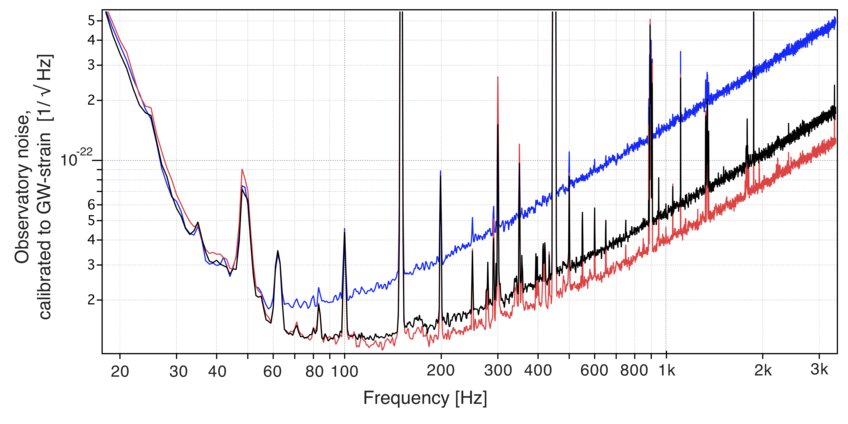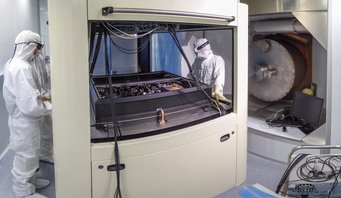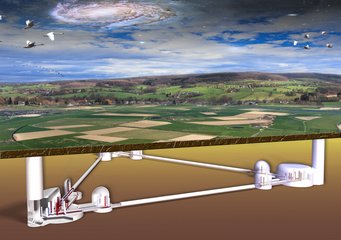Squeezed Light Success at Virgo
The gravitational-wave observatory near Pisa listens deeper into the cosmos with technology from Hanover
A squeezed-light source developed by researchers at the Max Planck Institute for Gravitational Physics (Albert Einstein Institute; AEI) for the Virgo gravitational-wave detector near Pisa has impressively demonstrated its capabilities in recent months. This is shown by the latest data published from the third observation run (O3) of the international detector network. The squeezed-light source reduces the dominant quantum mechanical detector background noise by about one third. This allows Virgo, for example, to detect gravitational waves from merging neutron stars up to 26% more frequently. The use of squeezed light also plays an important role for planned third-generation detectors such as the Einstein Telescope. The squeezed-light source was delivered and commissioned at the beginning of 2018. Since the start of O3 on April 1, 2019, it has provided significantly improved Virgo sensitivity.
Quantum mechanics limits the sensitivity of gravitational-wave observatories
The sensitivity of gravitational-wave observatories in today’s international network (Advanced LIGO, Advanced Virgo, GEO600) is limited over most of their measurement band by quantum mechanical background noise. This direct consequence of quantum mechanics cannot be eliminated fundamentally. Squeezed-light sources, which generate custom-tailored quantum states, can modify the background noise in such a way that it interferes less with the measurements.
In Physical Review Letters, Virgo Collaboration scientists together with four researchers from the Max Planck Institute for Gravitational Physics (Albert Einstein Institute) in Hanover today publish their results on the first very successful use of a squeezed-light source in the Virgo detector. In a parallel publication in the same issue of the journal, the LIGO Scientific Collaboration reports on the use of squeezed light in the LIGO detectors.
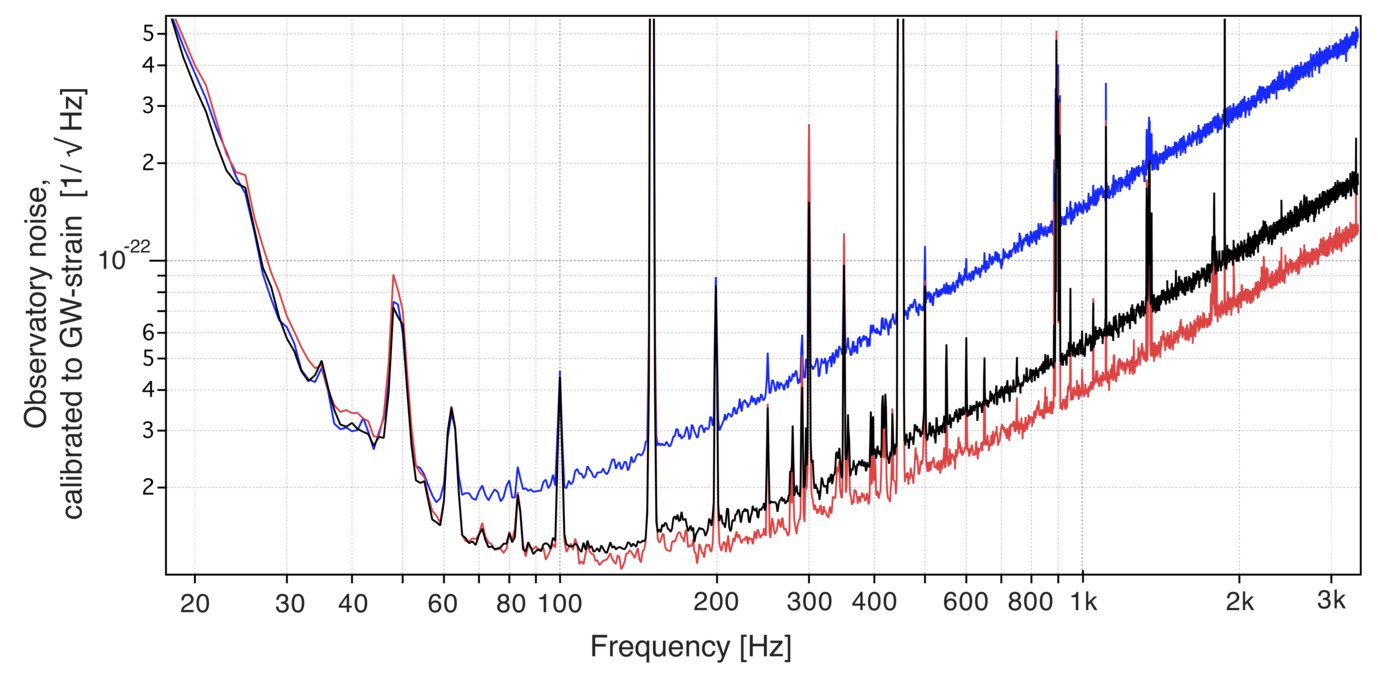
In routine use at GEO600 since 2010
“The use of squeezed light is a necessity to further increase the measurement precision of gravitational-wave observatories. This technology has been in routine use at the German-British GEO600 detector near Hanover since 2010 and has been operating there at world record level since the end of 2018,” says Henning Vahlbruch, researcher at AEI Hanover. Virgo and both LIGO detectors have also been using this technology since the start of the third observation run on April 1, 2019.
“In current detectors, the use of a squeezed-light source has the same effect as increasing the laser power, but without any of the disadvantages that this would entail, such as increased heating of optical components,” explains Moritz Mehmet, researcher at AEI Hannover. The use of squeezed-light sources reduces background noise in most of the measurement band, so that weaker gravitational waves can be observed more easily.
More signals through significantly and permanently reduced quantum noise
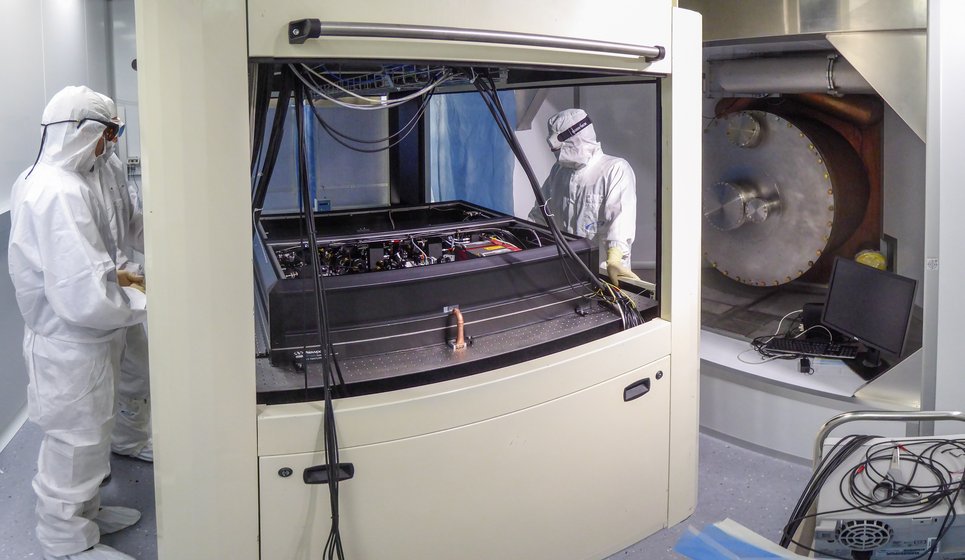
At Virgo a device developed by Vahlbruch and Mehmet on the basis of the GEO600 squeezed-light source was successfully used in the first half of O3. The publication published today describes the significant (up to one third) reduction of quantum noise in Virgo, which was achieved permanently (routinely during 99% of the measurement time).
This increases the rate at which Virgo can detect gravitational wave signals from merging neutron stars increases by up to 26%. During O3, 35 gravitational-wave candidates have been identified so far by LIGO and Virgo, including possible mergers of neutron stars.
The Virgo collaboration and the AEI researchers also investigated the factors that limit the use of the squeezed-light source. The device sends quantum states into the detector with reduced noise – darkness that is in a sense better than nature would normally allow. The reduction of detector noise achieved depends on the losses that occur when sending in the squeezed quantum states. Through detailed measurements, the scientists showed that with current technology, a reduction in quantum noise of up to a factor of two can be achieved at Virgo in the future.
Technology for the future of gravitational-wave astronomy
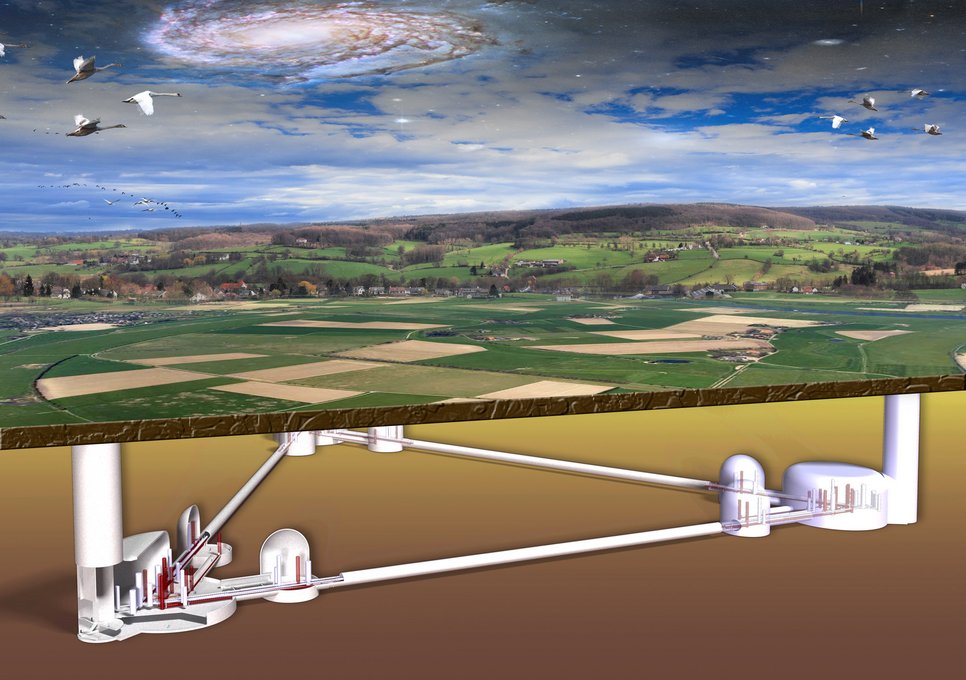
The sensitivity of all interferometric gravitational-wave detectors can only be further increased in the long term by using similar squeezed-light sources. “Planned third-generation gravitational-wave observatories such as the European Einstein Telescope depend on squeezed-light technology. The successful application in Virgo is another important step into the future of gravitational-wave astronomy,” explains Harald Lück, research group leader at AEI Hannover.
